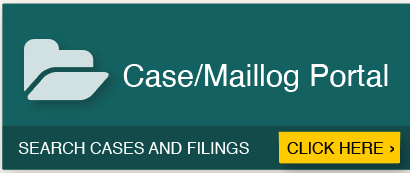Maryland Renewable Energy Portfolio Standard Program – Frequently Asked Questions
The objective of Maryland’s Renewable Portfolio Standard (RPS) is to recognize and develop the benefits associated with a diverse collection of renewable energy supplies. The State’s RPS Program does this by recognizing the environmental and consumer benefits associated with renewable energy. The RPS Program requires electricity suppliers to meet a prescribed minimum portion of their retail electricity sales with various renewable energy sources, which have been classified within the RPS Statute as Tier 1 and Tier 2 renewable sources. The program is implemented through the creation, sale and transfer of Renewable Energy Credits (RECs). The development of renewable energy sources is further promoted by requiring electricity suppliers to pay a financial penalty for failing to acquire sufficient RECs to satisfy the RPS. The penalty is used to support the creation of new Tier 1 renewable sources in the State.
What does the abbreviation RPS mean?
- RPS is the abbreviation for the Renewable Energy Portfolio Standard.
What is a Maryland-Eligible Renewable Energy Credit?
- A Maryland-Eligible Renewable Energy Credit is equal to the attributes associated with one megawatt-hour of Tier 1 or Tier 2 renewable energy from a certified Renewable Energy Facility.
What states are eligible to participate in the RPS?
- Section 7-701 of the Public Utilities Article of the Annotated Code of Maryland provides the framework by which the states eligible to participate in the Maryland RPS Program may be determined. Renewable energy credits must be derived from a source that is located in the PJM Region. Renewable energy credits may come from outside the area described above if the electricity is delivered into the PJM Region.
What fuel sources are approved for the Maryland RPS Program?
- Fuel sources are divided into two categories, Tier 1 and Tier 2. Tier 1 includes Solar, Wind, Qualifying Biomass, Methane from a landfill or wastewater treatment plant, Geothermal, Ocean, Fuel Cell that produces electricity from a Tier 1 source, Hydroelectric power plants of less than 30 MW capacity, Poultry litter-to-energy, Waste-to-energy, and Refuse–derived fuel. Tier 2 includes hydroelectric power other than pump storage generation.
What does “Qualifying Biomass” include?
- According to Section 7-701 of the Public Utilities Article of the Annotated Code of Maryland, “Qualifying biomass” means a nonhazardous, organic material that is available on a renewable or recurring basis, and is:
- Waste material that is segregated from inorganic waste material and is derived from sources including,
- Except for old growth timber, any of the following forest-related resources: A) Mill residue, except sawdust and wood shavings; B) Precommercial soft wood thinning; C) Slash; D) Brush; or E) Yard waste;
- A pallet, crate, or dunnage;
- Agricultural and silvicultural sources, including tree crops, vineyard materials, grain, legumes, sugar, and other crop by-products or residues; or
- Gas produced from the anaerobic decomposition of animal waste or poultry waste; or
- A plant that is cultivated exclusively for purposes of being used at a Tier 1 renewable source or a Tier 2 renewable source to produce electricity.
- Waste material that is segregated from inorganic waste material and is derived from sources including,
What does “Qualifying Biomass” not include?
- According to Section 7-701 of the Public Utility Companies Article of the Annotated Code of Maryland, “Qualifying biomass” does not include:
- Unsegregated solid waste or postconsumer wastepaper; or
- An invasive exotic plant species.
How many copies of the forms do I need to submit?
- For each filing, it is required that one original copy, sixteen additional copies and an electronic copy of the filings be mailed in.
How do I apply for certification as a Renewable Energy Facility?
- The required forms and additional information is available here.
The single largest cause of delay in the processing of applications is incomplete applications or attachments. The Commission will not consider incomplete applications.
What forms do I need to participate in the Maryland RPS Program?
- A complete description of the forms for the Maryland RPS Program is listed here.
Who should complete the various affidavits?
- An officer of the applicant should complete the various affidavits.
Do I need to notarize the various affidavits?
- Yes, the affidavits should be notarized.
What documentation of authority to sign is appropriate?
- Whoever signs the application is required to provide authority to sign on behalf of the applicant. A letter from a corporate officer or general counsel granting and/or confirming authority to sign is appropriate. If a corporate officer or general counsel signs the application, a letter of appointment to the position is appropriate documentation of authority to sign on behalf of the applicant.
What is GATS?
- The Generation Attribute Tracking System (GATS) is a system designed by PJM Environmental Information Services, Inc. for the purpose of tracking Renewable Energy Credits. GATS will monitor the generation of participating units and create certificates monthly based on actual output. A GATS certificate from a Commission-certified renewable energy facility will be considered a Maryland-eligible Renewable Energy Credit. Suppliers and load-serving entities are required to maintain a GATS account for compliance purposes. More information is available here.







 1-888-373-7888
1-888-373-7888 233733
233733
